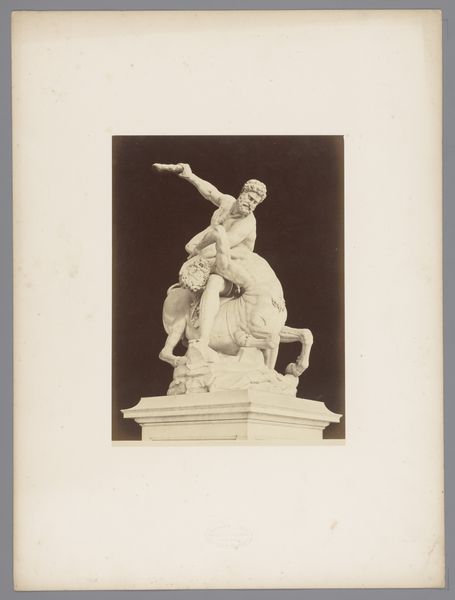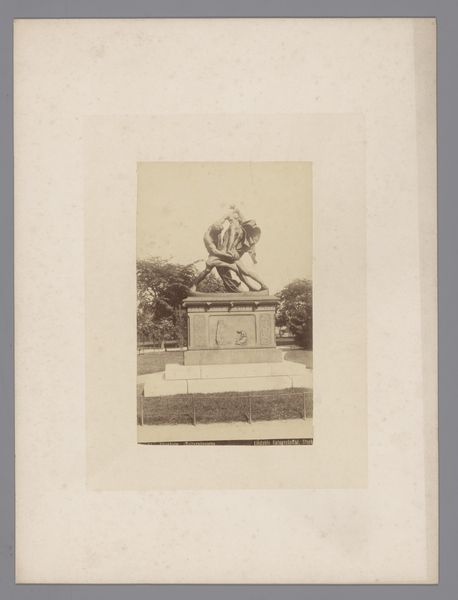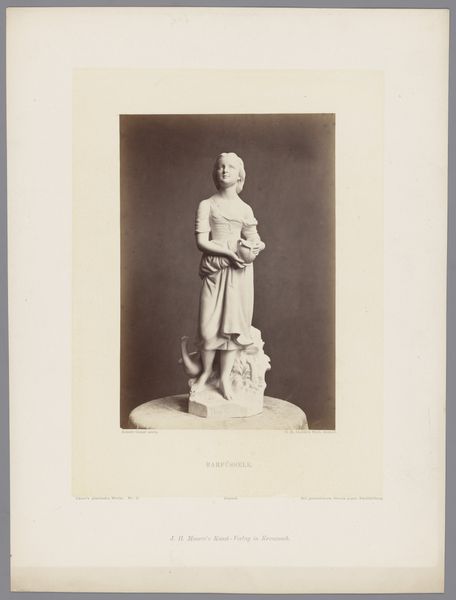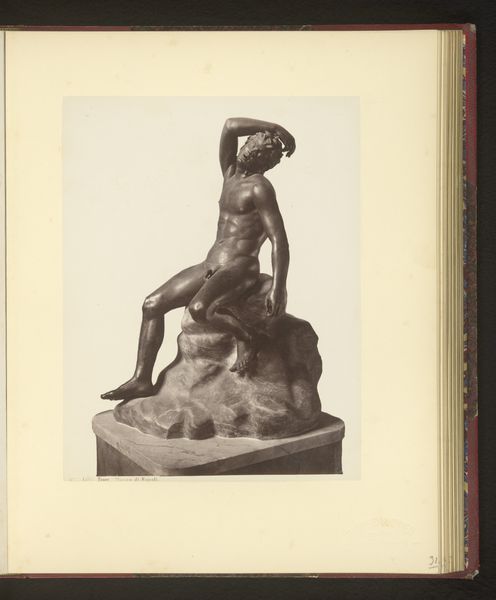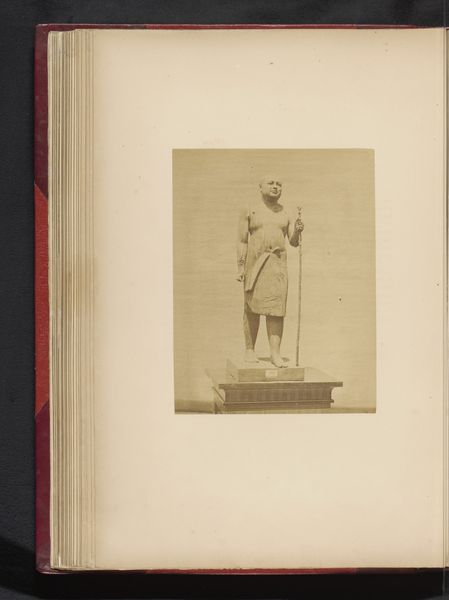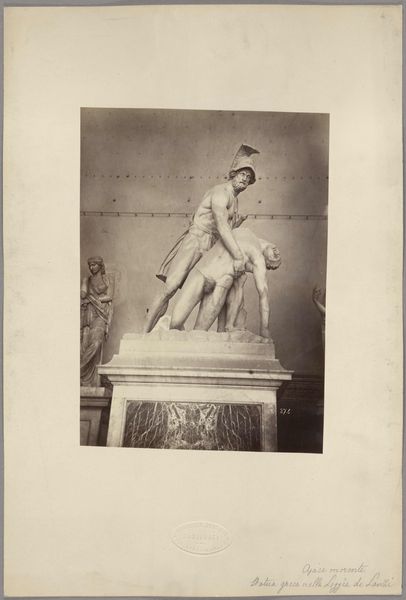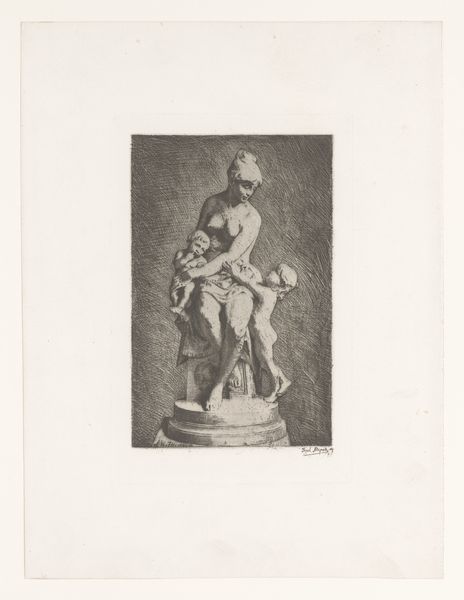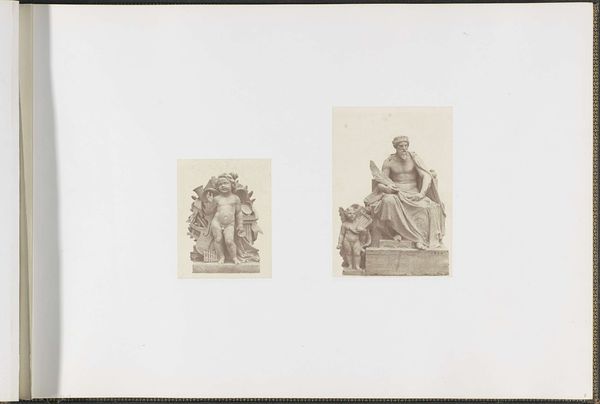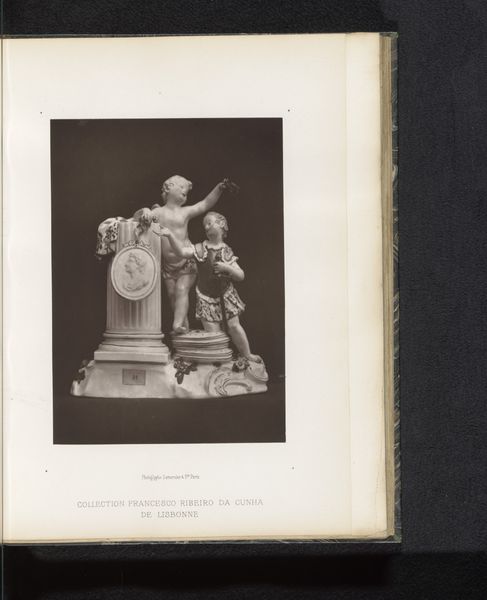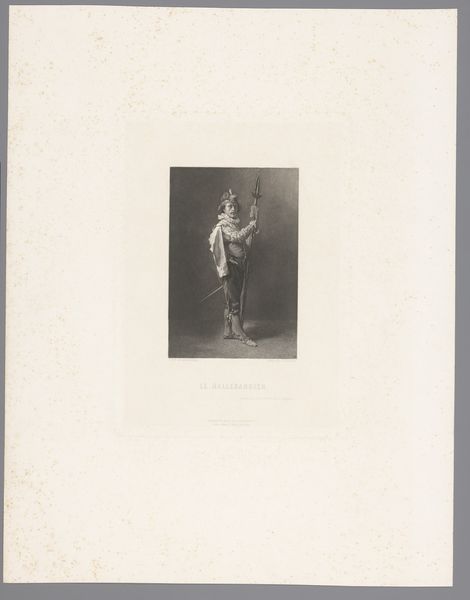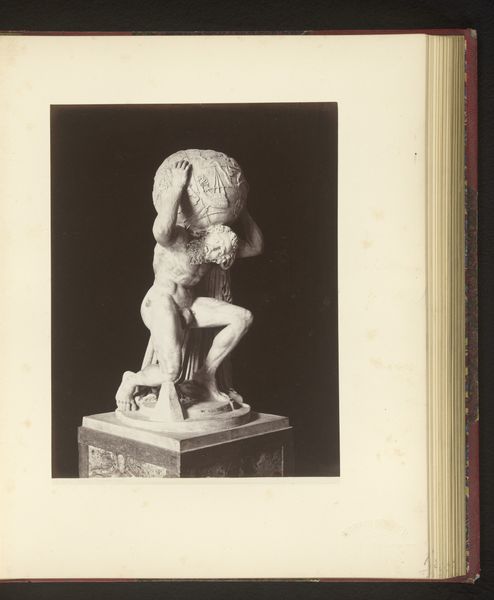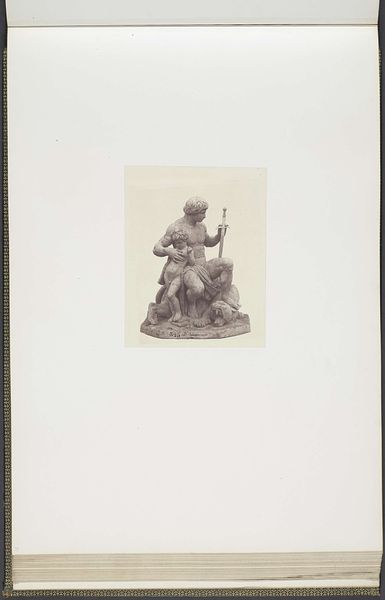
bronze, photography, sculpture
#
classical-realism
#
bronze
#
photography
#
sculpture
#
nude
Dimensions: height 226 mm, width 180 mm
Copyright: Rijks Museum: Open Domain
Curator: Before us, we have an intriguing photographic print dating back to before 1874. The work presents a bronze sculpture—titled "Bronzen beeld van een heroïsch figuur, knielend op een altaar"—depicting a heroic figure in a kneeling position upon what appears to be an altar. Editor: Woah, that’s quite the contorted posture. He looks… caught, doesn't he? Like he’s midway through something, perhaps an interrupted sacrifice? And the light's dramatic; almost cinematic in a way, giving him this powerful, melancholic air. Curator: Indeed. The strong chiaroscuro—the stark contrast between light and shadow—accentuates the musculature, emphasizing the body's form. We observe a masterful display of classical realism; notice the precise rendering of anatomical detail and the dignified repose. Editor: True. He is a vision alright. But, I wonder, what sacrifice are we talking about here? Or what story does the artist aim to whisper? Is this physical sacrifice, or something less concrete? The almost detached hand, slightly open adds this tension too, as though this statue can never finish the deed it has began... haunting, I find. Curator: From a formal standpoint, the sculptor plays skillfully with texture. Note the smooth planes of the skin juxtaposed with the subtle drapery which partly cover the torso. This, along with the lines created by the figure's body and altar generate movement and depth to the artwork. The work can perhaps be approached as a study of the male form, seen through the classical lens. Editor: Perhaps, or maybe he just wants us to feel it. That pull, that awkward midpoint of doing and not doing, which often hits us the most! Thinking of form in such sense gives a way better vision. I leave contemplating... such a strange figure to see Curator: Yes. Such nuances really make this visual depiction stay a bit longer than anticipated!
Comments
No comments
Be the first to comment and join the conversation on the ultimate creative platform.
